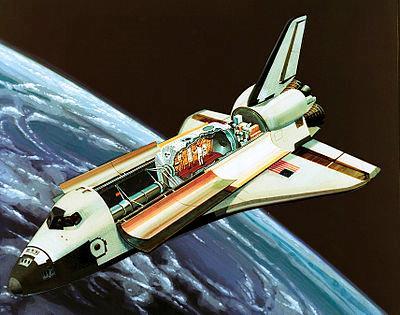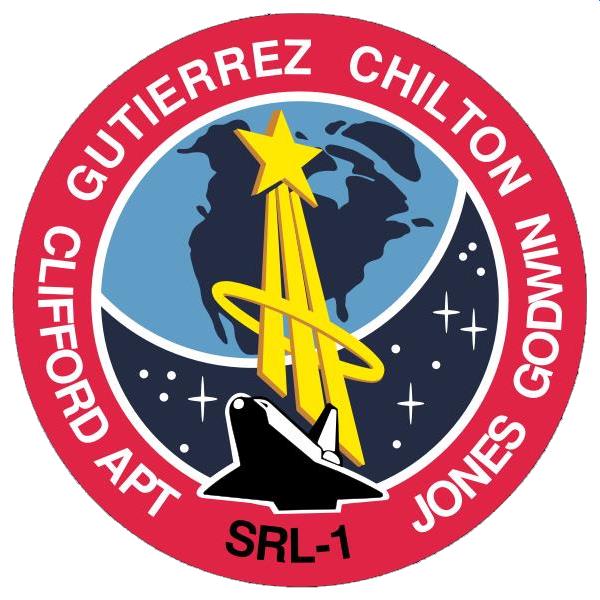Jay Apt
Spacelab 018 - STS-59
Mission Name: SRL-1
Astronauts:
Command Pilot:
Sidney M. Gutierrez
(Second Space Flight)
Pilot:
Kevin P. Chilton
(Second Space Flight) Mission Specialist 1:
Linda M. Godwin
Payload Commander Mission Specialist 2:
(Third Space Flight)
Mission Specialist 3:
Michael R. Clifford
(Second Space Flight) Payload Specialist 4:
Thomas D. Jones
(Fourth Space Flight)
SpacSpacelab was a reusable laboratory used on certain spaceflights flown by the Space Shuttle. The laboratory comprised multiple components, including a pressurized module, an unpressurized carrier and other related hardware housed in the Shuttle's cargo bay. The components were arranged in various configurations to meet the needs of each spaceflight.
Spacelab components flew on 22 Shuttle missions between November 1983 and April 1998. Spacelab allowed scientists to perform experiments in microgravity in Earth orbit.
Primary payload was the Space Radar Laboratory (SRL-1), located in payload bay; activated by crew and operated by teams on ground. SRL-1 included the Spaceborne Imaging Radar-C and the X-band Synthetic Aperture Radar (SIR-C/X-SAR) and an atmospheric instrument called Measurement of Air Pollution from Satellites (MAPS). The German Space Agency (DARA) and the Italian Space Agency (ASI) provided the X-SAR instrument. SIR-C/X-SAR covered approximately 38.5 million miles of the Earth, the equivalent of 20 percent of the planet. More than 400 sites were imaged, including 19 primary observation sites (supersites) in Brazil, Michigan, North Carolina and Central Europe. Thirteen countries were represented in the project with 49 principal investigators and more than 100 scientists, coordinated by the Jet Propulsion Laboratory (JPL). Some 133 hours of data were collected. The MAPS experiment measured the global distribution of carbon monoxide in the troposphere, or lower atmosphere.
Get-Away Special (GAS) experiments were sponsored by New Mexico State University, Matra Marconi Space (France), and the Society of Japanese Aerospace Companies.
Consortium for Materials Development in Space Complex Autonomous Payload-IV (CONCAP IV), carried in GAS hardware in the payload bay, was developed by the University of Alabama-Huntsville. It produced crystals and thin films through physical vapor transportation.
Middeck experiments included Visual Function Tester-4 (VFT-4), Space Tissue Loss-4 and -5; and Shuttle Amateur Radio Experiment (SAREX).
Mission also marked first flight of Toughened Uni-Piece Fibrous Insulation, known as TUFI, an improved thermal protection tile. Several test tiles were placed on orbiter's base heat shield between three main engines.
(Second Space Flight)
Spacelab Space Missions
Study Research
Space Cosmology
Science Research
*
About
Science Research
Science Theories
Site Map
BookShelf
Desk
Copyright © by Nigel G Wilcox · All Rights reserved · E-Mail: ngwilcox100@gmail.com
Designed by Nigel G Wilcox
Powered By AM3L1A
Pages within this section: Spacelab 01-32
Spacelab B11-20
Sub-Menu
11
M
menu
12
13
14
15
16
17
8
19
20
18
>>>
C
SM









